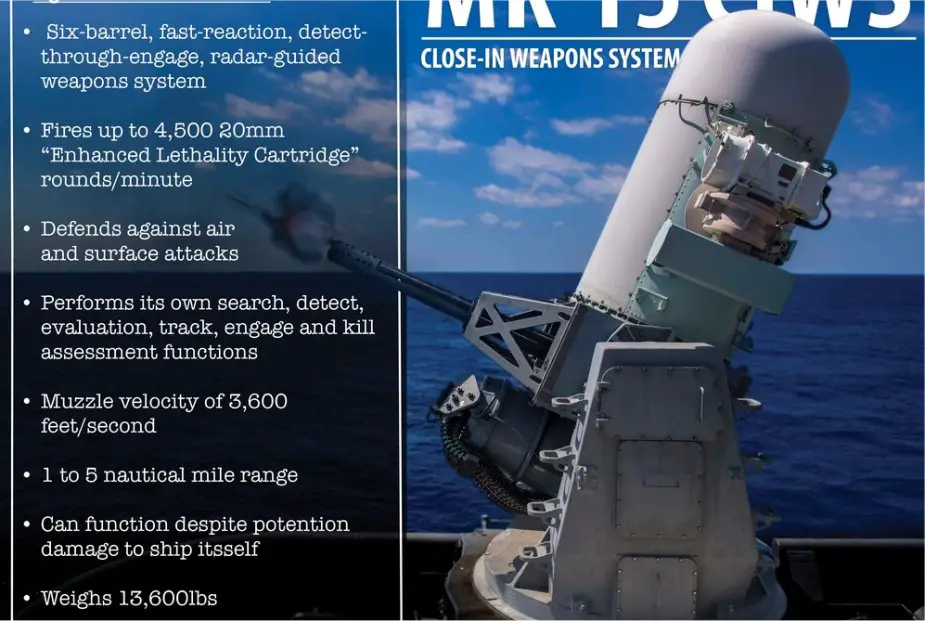Breaking news
Raytheon to deliver four Phalanx Close-In Weapon Systems to South Korea.
According to information published by the US DoD on September 30, 2022, Raytheon Missiles & Defense, Tucson, Arizona, is awarded a $49,046,788 firm-fixed-price modification to previously awarded contract for the procurement of four MK-15 Close-In Weapon Systems (CIWS) Block 0 to Block 1B Baseline 2 Upgrade and Conversion and related equipment for the Republic of Korea.
Follow Navy Recognition on Google News at this link
 MK 15 Phalanx Close-In Weapon Systems (Picture source: Dvids)
MK 15 Phalanx Close-In Weapon Systems (Picture source: Dvids)
Work is expected to be completed by May 2025. Foreign military sales (Korea) funding in the amount of $49,046,788 will be obligated at time of award and will not expire at the end of the current fiscal year. The Naval Sea Systems Command, Washington, District of Columbia, is the contracting activity.
MK 15 Phalanx CIWS provides ships of the U.S. Navy with an inner layer point defense capability against anti-ship missiles (ASM), aircraft and littoral warfare threats that have penetrated other fleet defenses.
Phalanx automatically detects, evaluates, tracks, engages and performs kill assessment against ASM and high speed aircraft threats. The current Phalanx variant (Block 1B) adds the ability to counter asymmetric warfare threats through the addition of an integrated, stabilized, Electro Optic sensor.
These improvements give Phalanx the added ability to counter small high speed surface craft, aircraft, helicopters and unmanned aerial systems (UAS). Phalanx is the only deployed close-in weapon system capable of autonomously performing its own search, detect, evaluation, track, engage and kill assessment functions.
Phalanx also can be integrated into existing ship combat control systems to provide additional sensor and fire-control support to other installed ship weapon systems.
Phalanx production started in 1978 with the Block 0 configuration, and was first installed in 1980 on the USS Coral Sea. The Block 1 configuration was installed on USS Wisconsin in 1988.
The first Block 1B installation was aboard USS Underwood (FFG-36) in 1999. The Phalanx program has had an active and continuous production, upgrade and overhaul program since 1978.
The basis of the system is the 20 mm M61 Vulcan Gatling gun autocannon, used by the United States military on various tactical aircraft since 1959, linked to a Ku band fire control radar system for acquiring and tracking targets.
This proven system was combined with a purpose-made mounting, capable of fast elevation and traverse speeds, to track incoming targets. An entirely self-contained unit, the mounting houses the gun, an automated fire-control system and all other major components, enabling it to automatically search for, detect, track, engage, and confirm kills using its computer-controlled radar system.
Owing to this self-contained nature, Phalanx is ideal for support ships, which lack integrated targeting systems and generally have limited sensors. The entire unit has a mass between 12,400 to 13,500 lb (5,600 to 6,100 kg).


























